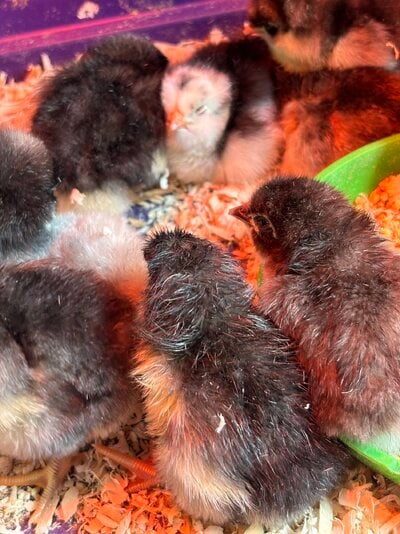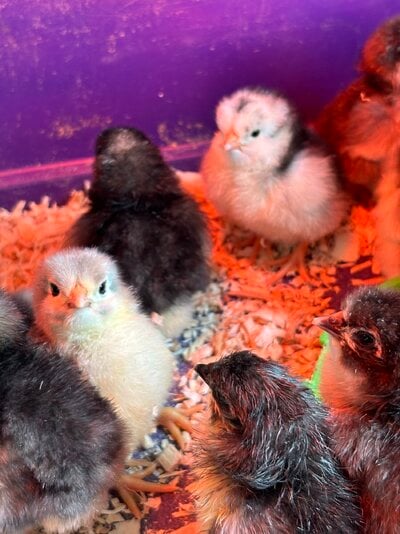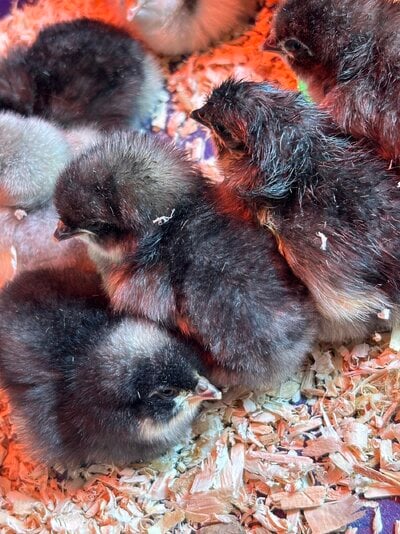Carrie-d away with chix
Hatching
- Apr 10, 2024
- 2
- 1
- 8
I have all my colors penned together right now, I keep hearing about mottled and splash orpingtons. I’m still learning genetics and colors.
How do you get mottled or splash orpingtons?
I have blue/black/lavender/chocolate/ and one jubilee hen mixed.
How do you get mottled or splash orpingtons?
I have blue/black/lavender/chocolate/ and one jubilee hen mixed.







